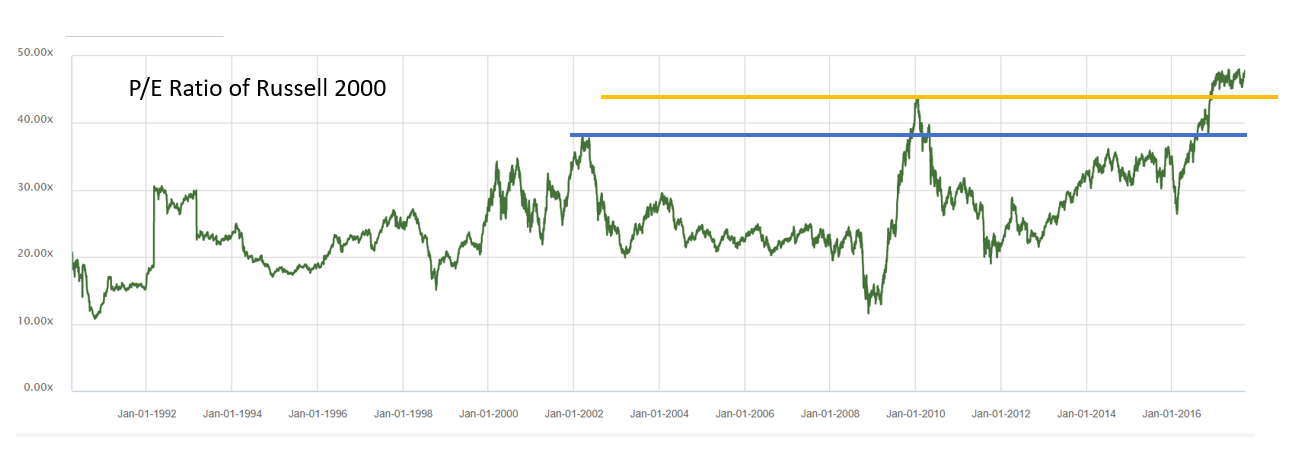Traders usually enjoy a quick rally in small-cap stocks at the end of the year. This trade was identified many years ago as the “January effect.”
For some reason, small caps moved higher every January. As traders saw how reliable that trade was, they began buying earlier and earlier to get an edge on other traders.
The January effect now occurs sometime in October or November. Traders begin looking for a signal in small caps in September.
This year, the signal is to avoid small caps. The chart below shows the price-to-earnings (P/E) ratio of small caps going back to 1990.
It’s at an all-time high. The stocks are overvalued.

(Source: Standard & Poor’s)
In the chart above, we see the P/E ratio of the Russell 2000 Index. That’s the most popular small-cap benchmark.
The blue line marks the high at the top of the market in 2002. The yellow line marks the 2010 top. We are well above both highs right now.
Looking closer, we see that the P/E ratio has been in a narrow range for the past year.
It’s reached a high of 48 five times in the past six months. Each time, it retreated from there. A P/E ratio of 48 is more than twice as high as the long-term average P/E ratio.
Right now, the P/E ratio is 47.8, just 0.4% below the level where previous declines started.
We don’t know when the bear market will start, but when it does, history tells us the P/E ratio will drop to about 20. This indicates stocks could fall more than 50% in the next few years.
This year, instead of watching for the January effect, traders should watch small caps for the start of the bear market.
Small caps always lead the market, both up and down. For now, the trend is up.
When the decline does start, it will be important to sell. A breakdown in the Russell 2000 will be the signal to sell.
To watch for this signal, you can monitor the iShares Russell 2000 ETF (NYSE: IWM). This is an exchange-traded fund that tracks the small-cap index.
When it falls below $132, we will have a bear market signal. That’s about 7% below the current price.
The January effect is just one of the seasonal trends I monitor in my Precision Profits service. One of those trends allowed my readers to trade another ETF for a one-week gain of more than 110%.
Regards,

Michael Carr, CMT
Editor, Peak Velocity Trader




